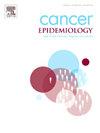确定与癌症发病率和死亡率相关的环境因素和生物指标:全环境关联研究
IF 2.3
3区 医学
Q3 ONCOLOGY
引用次数: 0
摘要
背景目前关于肿瘤发生和癌症死亡率的决定因素的知识仍然不完整、不一致和有争议。我们的目的是进行一项全环境关联研究(EWAS),系统地调查并初步验证环境因素和生物学指标与癌症患病率和死亡率的相关性。方法从美国国家健康与营养检查调查(NHANES)中选取符合条件的参与者,按调查年限随机分为训练组和测试组。通过身体检查或实验室测试评估了环境和生物暴露。采用调查加权logistic回归和COX比例风险回归模型,分别探讨398个因素与癌症患病率和380个因素与癌症死亡率的关系。为了调整多重比较,训练集中的积极发现(错误发现率[FDR] <;5 %)在测试集中初步验证(P值<;0.05)。进一步拟合随机森林模型,以评估与癌症患病率相关的已确定因素的重要性和诊断价值。结果共有55,021名普通参与者和5163名癌症幸存者分别被纳入癌症患病率和死亡率的研究。在调整了潜在的混杂因素后,我们确定了与普通人群中癌症患病率相关的7个环境或生物因素(如总胆红素、睾酮和β -隐黄质),以及分别与癌症个体的全因(如c反应蛋白)、癌症特异性(如血硒)和非癌症死亡率(如白蛋白)相关的21、8和6个指标。ewas确定的因素有助于随机森林模型在预测癌症患病率方面的更好表现。结论采用EWAS方法,本研究为预防和控制癌症的潜在靶点提供了新的见解。本文章由计算机程序翻译,如有差异,请以英文原文为准。
Identifying environmental factors and biological metrics associated with cancer prevalence and mortality: An environment-wide association study
Background
Present knowledge about determinants of oncogenesis and cancer mortality remains incomplete, inconsistent, and controversial. We aimed to conduct an environment-wide association study (EWAS) to systematically investigate and tentatively validate correlations of environmental factors and biological metrics with prevalence and mortality of cancer.
Methods
All eligible participants were selected from the US National Health and Nutrition Examination Survey (NHANES) and randomly split into training and testing sets by survey years. Environmental and biological exposures were assessed through either physical examinations or laboratory tests. We conducted survey-weighted logistic regression and COX proportional hazards regression models to investigate the relationships of 398 factors with cancer prevalence and 380 factors with cancer mortality, respectively. To adjust for multiple comparisons, positive findings in the training set (false discovery rate [FDR] < 5 %) were tentatively validated in the testing set (P value < 0.05). Random forest models were further fitted to evaluate the importance and diagnostic value of identified factors in relation to cancer prevalence.
Results
Overall, 55,021 general participants and 5163 cancer survivors were included in the study of cancer prevalence and mortality, respectively. After adjusting potential confounders, we identified 7 environmental or biological factors (e.g. total bilirubin, testosterone, and beta-cryptoxanthin) associated with cancer prevalence in the general population, as well as 21, 8, and 6 indicators associated with all-cause (e.g. C-reactive protein), cancer-specific (e.g. blood selenium), and noncancer mortality (e.g. albumin) among individuals with cancer, respectively. EWAS-identified factors contributed to better performance of random forest models in predicting cancer prevalence.
Conclusions
Employing an EWAS approach, this study provided novel insights into potential targets for prevention and control of cancer.
求助全文
通过发布文献求助,成功后即可免费获取论文全文。
去求助
来源期刊

Cancer Epidemiology
医学-肿瘤学
CiteScore
4.50
自引率
3.80%
发文量
200
审稿时长
39 days
期刊介绍:
Cancer Epidemiology is dedicated to increasing understanding about cancer causes, prevention and control. The scope of the journal embraces all aspects of cancer epidemiology including:
• Descriptive epidemiology
• Studies of risk factors for disease initiation, development and prognosis
• Screening and early detection
• Prevention and control
• Methodological issues
The journal publishes original research articles (full length and short reports), systematic reviews and meta-analyses, editorials, commentaries and letters to the editor commenting on previously published research.
 求助内容:
求助内容: 应助结果提醒方式:
应助结果提醒方式:


